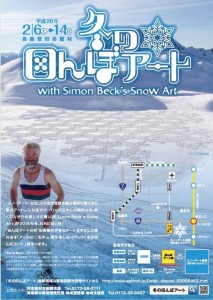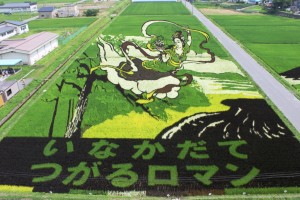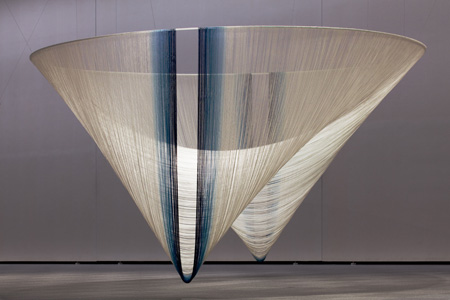Winter Rice Field Art
Mel T (Aomori-ken, 2007-2012) is a Canadian living and working in Towada City, Aomori. For more information about events, sightseeing, restaurants, etc. in Towada City, and around Aomori Prefecture & Japan, visit her blog at http://towada-city.blogspot.com.
Inakadate Village (Aomori Prefecture), the pioneer of rice field art, will be holding a Winter Rice Field Art event this February 2016 in collaboration with internationally renowned snow artist Simon Beck, who creates geometrical artworks by walking across/around fields of snow in snow shoes. He has traveled all over the world creating snow art works, but this will be his first work in Japan.
Japan Local: Inakadate Rice Field Art
Mel T (Aomori-ken, 2007-2012) is a Canadian living and working in Towada City, Aomori. For more information about events, sightseeing, restaurants, etc. in Towada City, and around Aomori Prefecture & Japan, visit her blog at http://towada-city.blogspot.com.
Inakadate Village (Aomori Prefecture) has a long history relating to rice. The site of an ancient rice field dating back to the mid-Yayoi Period (300 B.C.~300 A.D.), the Tareyanagi Iseki was discovered in Inakadate in 1981. This was a significant find as until its discovery, it had been believed that rice fields were not cultivated in Tohoku during the Yayoi Period. The Tareyanagi Iseki was designated a National Historic Site on April 11, 2000.
To celebrate and promote its history of rice production, Inakadate began offering rice planting experience tours. In order to make the experience more interesting, they decided to use different coloured rices to draw a picture of Mt. Iwaki with the words 弥生の里いなかだて (Yayoi no sato Inakadate) meaning “Yayoi Village Inakadate.” This was the humble beginning of rice field art–although at the time it was not referred to as “art” but simply as “rice characters” (稲文字 ine moji).
Since its beginnings as “rice characters,” the drastic improvement in technological and artistic levels have made Inakadate’s rice art an increasingly popular site for both domestic and international tourists. It has proved so popular that in 2012, a second rice field art site was started at the Michi no Eki (Roadside Station) Inakadate “Yayoi no Sato.”
The theme for 2015’s rice field art is “Gone with the Wind” for the main site and “Star Wars” for the second site (Michi no Eki Inakadate “Yayoi no Sato”).
“Fiber Futures: Japan’s Textile Pioneers” and “Postcards from Japan: Messages from Tohoku Artists” @ Japan Society until 12/18/2011
Carolyn Brooks (Ishikawa-ken, Kanazawa, 2006-11) is co-author of the blog MadSilence–a cross-cultural blog written with her father–and a current culture/education related job-seeker in the NY area available for full-time or consulting work.
Yesterday I had the opportunity to visit the Japan Society in NYC. Hidden behind an outwardly unassuming facade across the street from the United Nations, The Japan Society has been promoting Japanese-American relations since 1907. Inside, the Society shows its true character as the indoor gardens, water features, and shoji-inspired walkways wow visitors as much as the broad range of classes, exhibitions, and lectures they hold each year.
Currently showing (until December 18th) is “Fiber Futures: Japan’s Textile Pioneers.” It’s a collaboration between The Japan Society and Textile Network Japan along with Tama Art University Museum. As you enter the exhibit, you walk through the first piece of art! The doorway is covered with a noren, or traditional door curtain, made of space-age materials that look like watered silk and gold leaf. It was one great example of how the 30 artists who contributed pieces combined traditional techniques and modern materials to show the versatility and beauty of textiles….
CLICK HERE TO READ THE REST OF THE POST…





